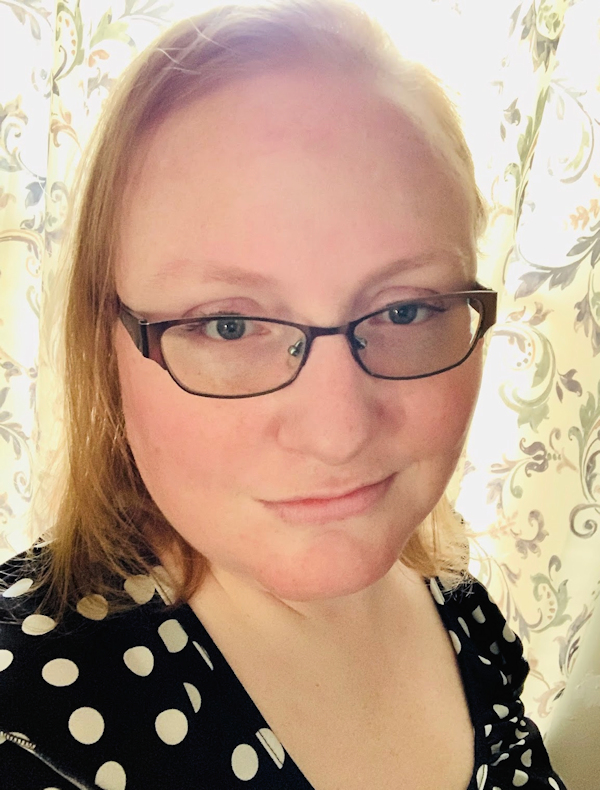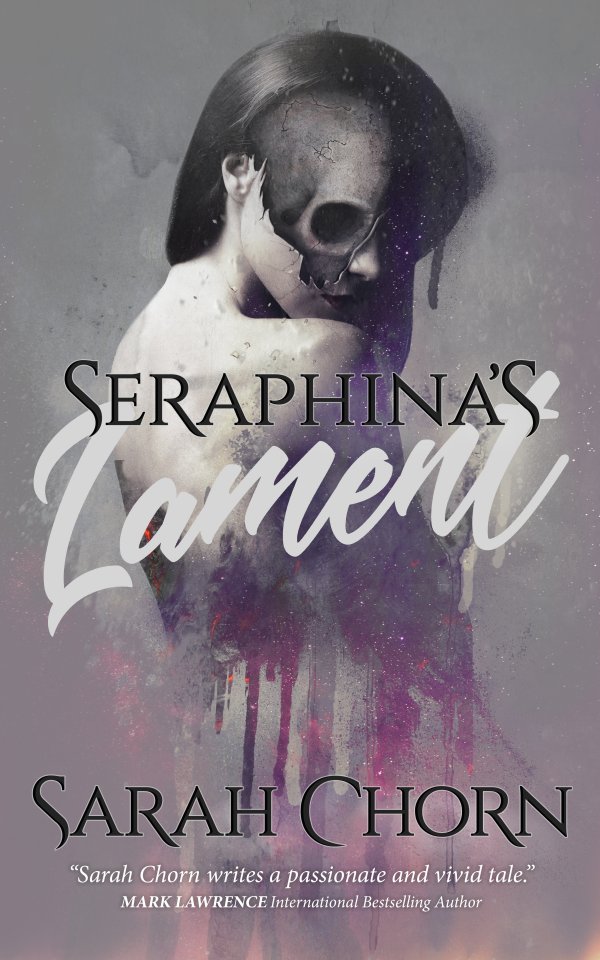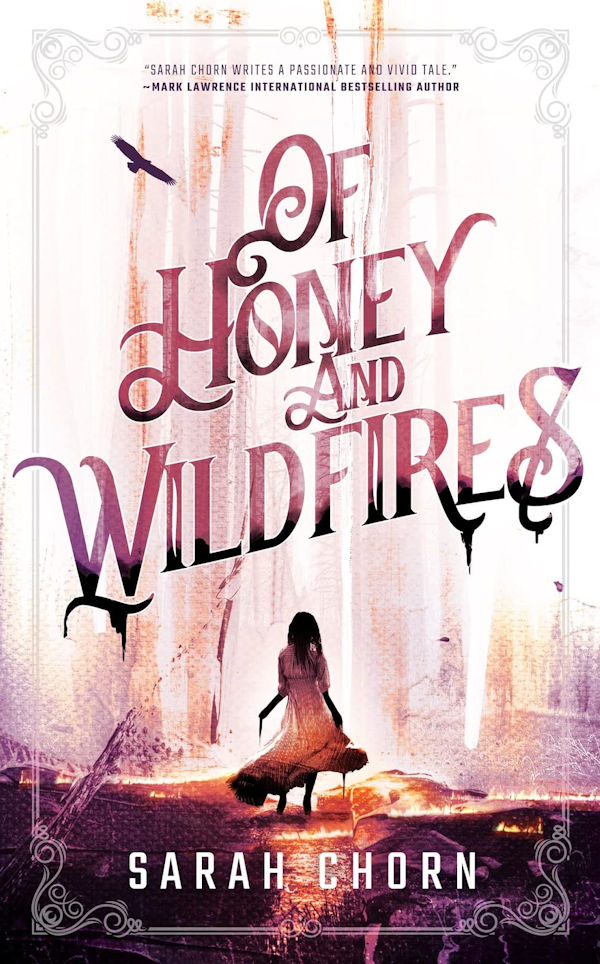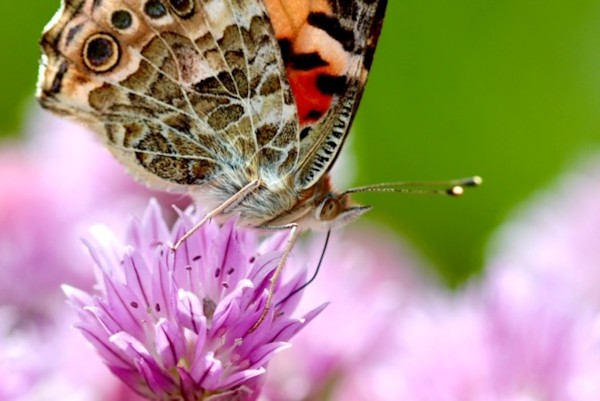 Sarah Chorn has been part of the fantasy community for many years. On her blog, Bookworm Blues, she does book reviews and has participated in the Self-Published Fantasy Blog-Off. She is also a freelance content editor [Editor’s Note: A fantastic content editor!]. And now she has two published novels with more on the way! Today she has stopped by to talk with us about her work! On with the interview!
Sarah Chorn has been part of the fantasy community for many years. On her blog, Bookworm Blues, she does book reviews and has participated in the Self-Published Fantasy Blog-Off. She is also a freelance content editor [Editor’s Note: A fantastic content editor!]. And now she has two published novels with more on the way! Today she has stopped by to talk with us about her work! On with the interview!
We’re both pantsers, but for a pantser you produce amazingly tight, cohesive stories in what is to me, record time. How many drafts do you typically write before the pieces of a story fall into place?
Usually I send it to my editor after I’ve done the second draft. My first draft is…interesting. I start out the book with a certain “feeling” and a “vague idea”. Around the middle of the book, I figure out what I’m writing. From that point on, the book is pretty tight and needs minimal changes. When I’m done, I have to go back and rewrite vast chunks of the first half of the book. Then I reread the second and make sure it all lines up and send it on.
I hate to ask this boring question that everyone asks, but where do your ideas come from?
I don’t even know. I swear to God they just appear. I don’t even know what I’m going to write about until I start writing. I don’t figure out my ideas, until I’m well into the book.
More specifically, do you start with a character or a world first?
 You’re going to hate this, but I honestly start out with a thematic idea, or a feeling first. With Of Honey and Wildfires, I wanted to write a book about love. That’s all I knew, and that’s how it ended up. With Seraphina’s Lament, I wanted to write a book about change, in its many forms. I never really know how those ideas will come out, but they do. Glass Rhapsody, the book after Of Honey and Wildfires is about redemption. Daughter of the Bright Earth is about freedom. So, I guess my answer is, I start out with a theme. Some topic I want to explore. Then I sit down and see what happens.
You’re going to hate this, but I honestly start out with a thematic idea, or a feeling first. With Of Honey and Wildfires, I wanted to write a book about love. That’s all I knew, and that’s how it ended up. With Seraphina’s Lament, I wanted to write a book about change, in its many forms. I never really know how those ideas will come out, but they do. Glass Rhapsody, the book after Of Honey and Wildfires is about redemption. Daughter of the Bright Earth is about freedom. So, I guess my answer is, I start out with a theme. Some topic I want to explore. Then I sit down and see what happens.
You like to base your worlds and/or stories on historical periods and events. Do you begin writing the story and then pick the period, or is it the other way around?
I really never know what is going to trigger an idea, and I don’t go into anything with a plan. I start writing when I have a feeling, I have things to say, and a nebulous idea of some theme I want to play with, and I’m just as surprised as you are by what comes out. Usually, in the process of it all coming out, I realize I have a time period figured out, I just didn’t know it until I started writing.
Many authors who look to history for inspiration stick with a particular geographic location and era. You seem to draw from all over the globe over a wide range of historical periods. Where does that come from?
I read a ton of nonfiction books. The world is an absolutely huge place, and I’m really, really interested in the parts of it I don’t know much about. It’s the countries, the events, the people, the places I don’t know that keep me engaged. So, when I read nonfiction and when I do my research, it’s rare that I read books about well-known events (though I do). It’s books about forgotten historical figures, or places like Myanmar, and the history of uranium that interests me, and generally keeps me hopping around the world, exploring things that are new (to me). I guess this is why I’m not so focused on one event or one place, and why I hop around. I want to know more about the world as a whole, not just the stuff I already know.
More related to my writing, I never really know what is going to be the seed from which my next book idea grows, so it’s a good exercise for me to just read, voraciously, as much weird nonfiction I can get my hands on. It keeps my creative well full, with plenty to draw on.
One of the things I loved about Of Honey and Wildfires was the narrowing scope of each POV character’s narrative, which to me felt very much like a camera’s zoom lens. You’re a talented photographer as well as a gifted writer. How much of a connection is there between your photography and your fiction?
 They are very related, actually, and it’s not something people ask about much. I enjoy the narrow scope, the zoomed-in focus of the story.
They are very related, actually, and it’s not something people ask about much. I enjoy the narrow scope, the zoomed-in focus of the story.
I really enjoy macro photography. It’s the tiny details that make macro so interesting. There is so much of the world we just don’t see. Macro photography is taking the smallest part of the world, and making it larger than life, impossible to overlook, and that’s really something I try to carry into my writing. It’s the small decisions, the quiet words, the overlooked moments that make such huge, huge impacts. It’s a few choice characters, a close-cropped frame, a picture that shows the intimacy and power of the overlooked, and yes, this is exactly why I write books with tight focuses. I don’t want to write the sprawling epic. I want to write books full of all those overlooked, personal moments you can’t look away from. I want my books to be the literary version of macro photography. The drama of the soul interests me more than the drama of the battlefield, I guess.
Which came first, writing or photography?
I just had a conversation with my mother today where she said, “I don’t remember a time in your life you weren’t writing a book.”
I have my first bit of writing from kindergarten, a chapter book about a bunch of bears lost in the woods. In pre-school I have picture books I created. I mean, it’s always been part of my life. Photography was later. When I was diagnosed with cancer, photography came along. It was what I did to help me remember the world is a large, exciting, beautiful place, and my personal story is just one piece of it, rather than the focus of it. When I feel really, really overwhelmed by everything, it’s photography that reminds me how small I actually am, and when life feels so incredibly, painfully large, that’s exactly what I need most.

Your books always feature characters who differ from the standard fantasy protagonists, and their differences are often the source of their power rather than being flaws or weaknesses, or there merely for the sake of “diversity.” Could you talk about why this is important?
I feel like this is mostly a reflection of me. I’ve always been a bit of an outsider. I’ve never really fit in. I always saw the world differently. Never had many friends, or an easy time making friends. I still don’t. I am always on the fringes, on the outside. I have a hard time people-ing. When I was younger, I hated it. I felt so awkward. I had horrible self-esteem. I was seriously, dangerously depressed. When I was a teenager, I was an athlete and I blew my shoulders out. This was really my first experience with the saga that is Ehlers-Danlos Syndrome, though we didn’t know it until I was diagnosed at 33. And then there’s cancer, which is a whole other saga.
It’s a lot, and you learn how to cope. You either swim, or you drown, and it’s taken me a long, long time to learn to swim, to learn to deal with all this stuff. Sometimes I do better than others. Some days, I’ll swear I’m drowning. But, I’ve learned it’s these things that have set me apart that have actually been my strength, though they have been painful, and overwhelming, and horrible. If I wasn’t eternally the outsider, I wouldn’t have learned how to look at the world differently, and I wouldn’t write the books I do, or wouldn’t have learned to cope with things the way I have. The list goes on.
My disabilities…that’s a complex topic and I’ll leave most of it for another time, but I will say that my disabilities and my cancer is part of my story. It’s part of who I am, and I could no more not write about that, than I could willingly stop breathing. While the diversity in my books is about representation, and we need to see ourselves in the stories we read and write, it is also very much about the fact that this is who I am, and it is impossible not to write it. Each book is a piece of me, and I hope somewhere out there, a reader relates to my stories, and perhaps, for a moment, feels understood and knows they aren’t alone.
Sarah’s first two standalones, Seraphina’s Lament and Of Honey and Wildfires, are available now! You can learn more about Sarah and her work on her website and follow her on Facebook, Twitter, and Instagram!


